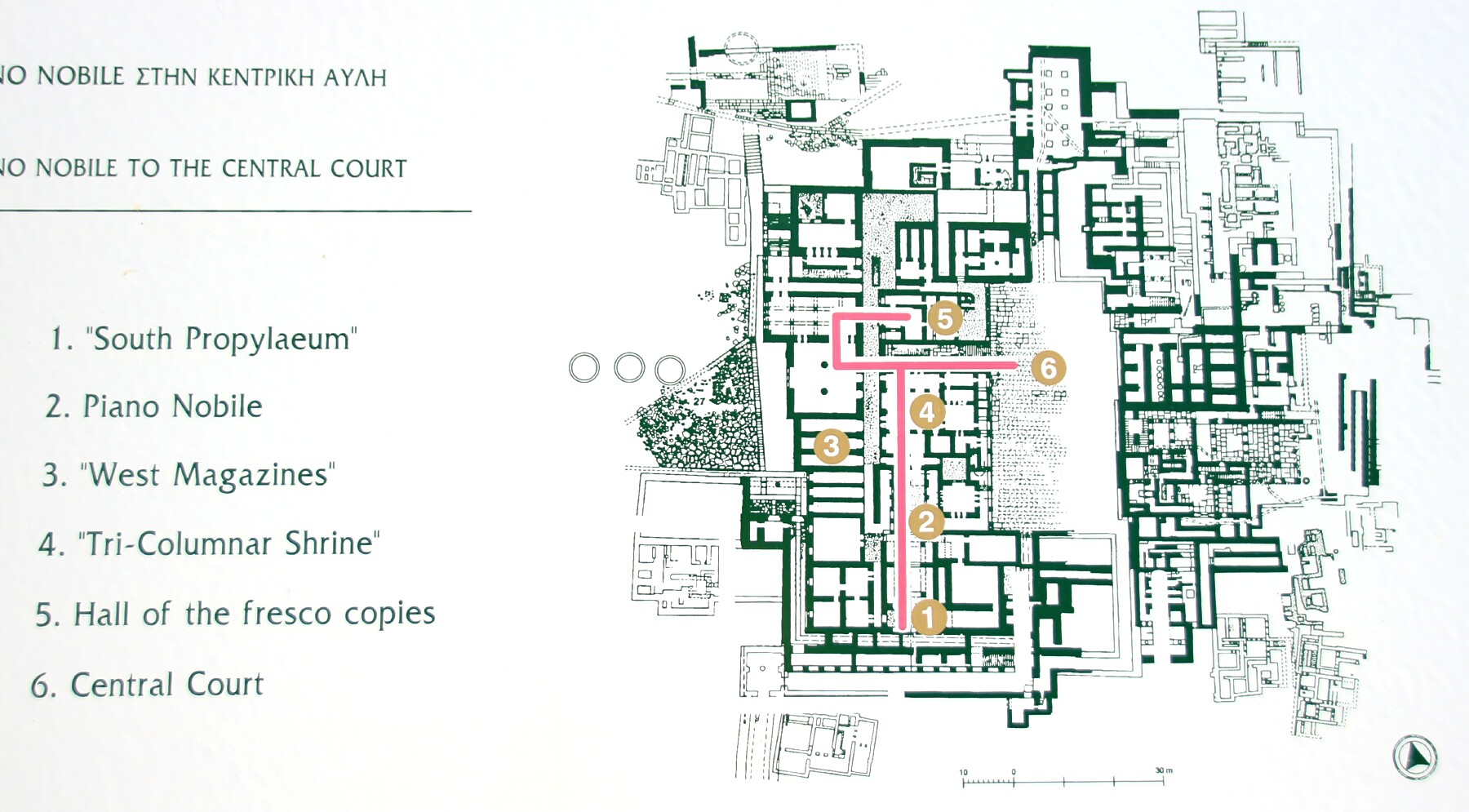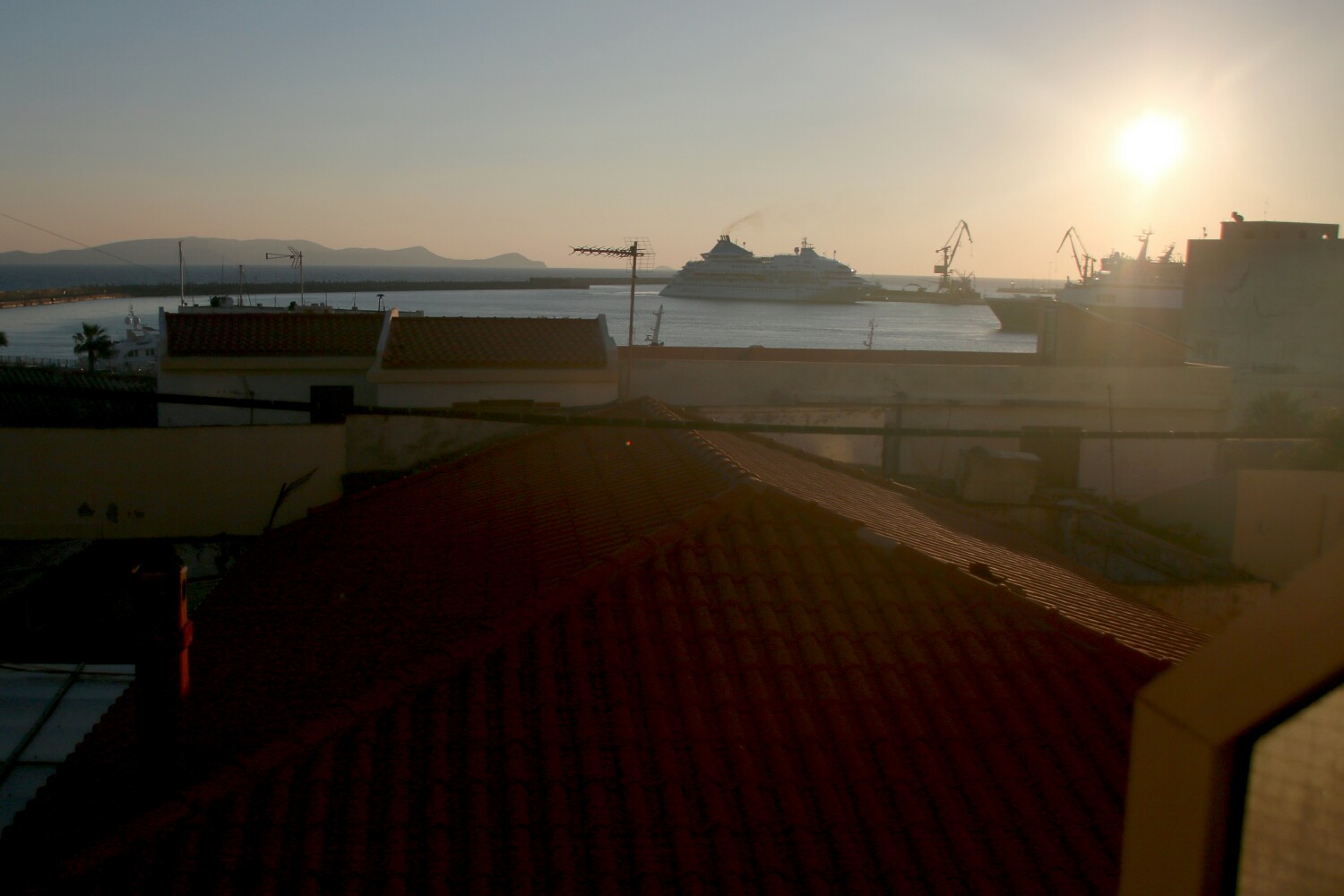On Day 10, I took the bus to the Palace of Knossos, just a bit outside of Heraklion (sometimes spelled Iraklion), largest city and capital of Crete.
Knossos has been called Europe's oldest city, settled in the Neolithic period around 7000 BC. The palace of Knossos eventually became the ceremonial and political
centre of the Minoan civilization and culture. The Minoans were based in Crete and other Aegean islands and flourished from about 2600 to 1400 BC, before declining.
The first palace was built around 1900 BC and the urban area had a size of around 18,000 people, but
at its peak the palace and surrounding city boasted a population of 100,000 people shortly after 1700 BC. The first palace was destroyed by earthquake
around 1700 BC, but Knossos Palace was rebuilt on an even grander scale by 1650 BC., and the Minoans there dominated until 1450 BC.
Knossos continued to be a thriving centre in trade and art, but the palace was destroyed around 1380 BC by attack, probably by the Mycenaeans, and the glory of Knossos was lost.
But it was repopulated and lived in until the fall of the Minoans around 1100 BC, their fall occuring for reasons unknown.
The area was again repopulated in 1000 BC and was in use by various groups - Knossians, Egyptians (under Ptolemy), Romans, Macedonians, Christians,
until about the 9th century AD, when the area was abandoned for the city of Chandax, the site of modern Heraklion.
The excavation of the Palace starting in 1900, led by Arthur Evans of Oxford and they protected the ruins, but by 1925 he decided to try something controversial.
He began to reconstruct the palace, using Minoan wood beams, concrete and paint to recreate wooden columns, recreated the wall paintings and made copies
of those paintings. It is not clearly labelled at the site what is original and what has been reconstructed, although some of the paintings are pretty
obviously restored copies.
|

Above: The plan of the Palace of Knossos.
|
|
1 the sun rises over the Heraklion harbour outside my hotel room.
2 and 3 show the entrance to the Knossos Palace.
4 to 6 show the South Propylaeum on the southwest end of Knossos Palace, and the two paintings restored.
7 is the Tri-Columnar Shrine.
8 is the West Magazines.
9 is the Piano Nobile.
10 and 11 are views from on top of the Hall of Frescos (right above the Throne Room), with smaller copies of frescos from the Palace on the top floor, the originals
housed in the Heraklion Archaeological Museum.
|

|
|